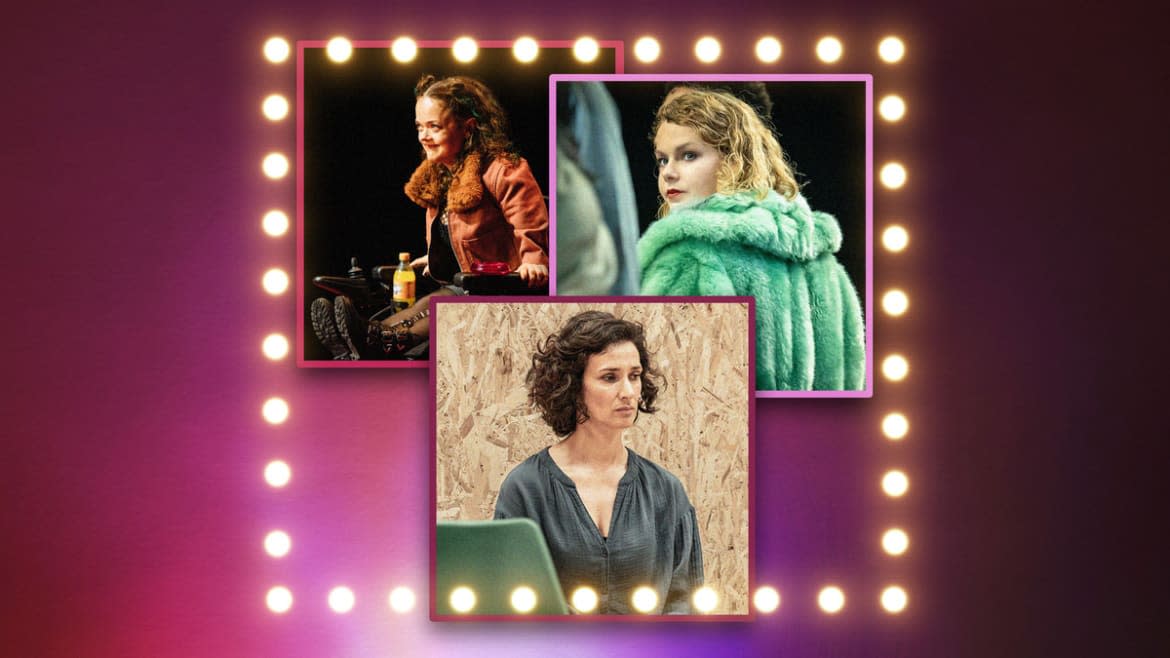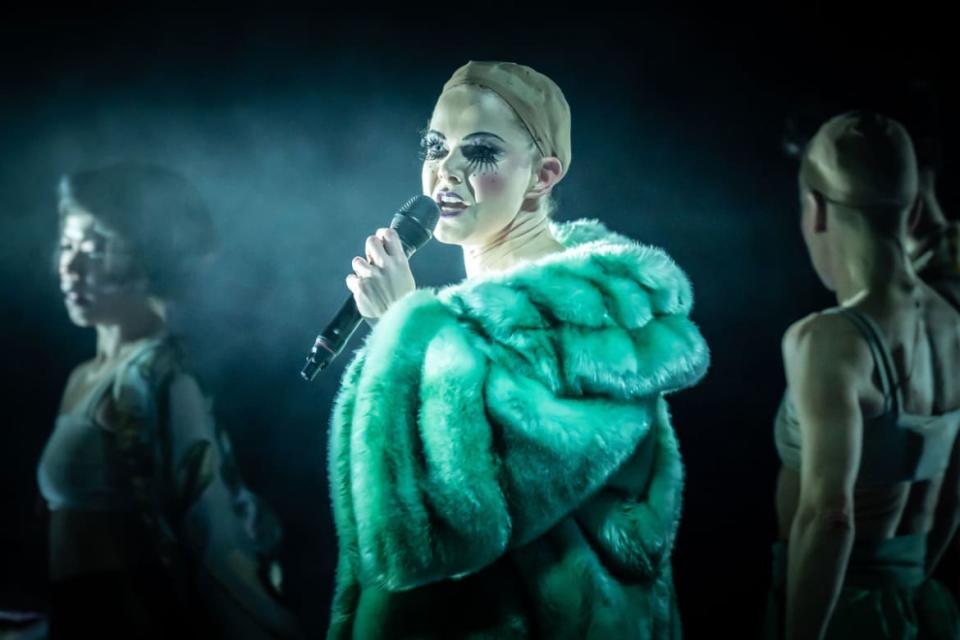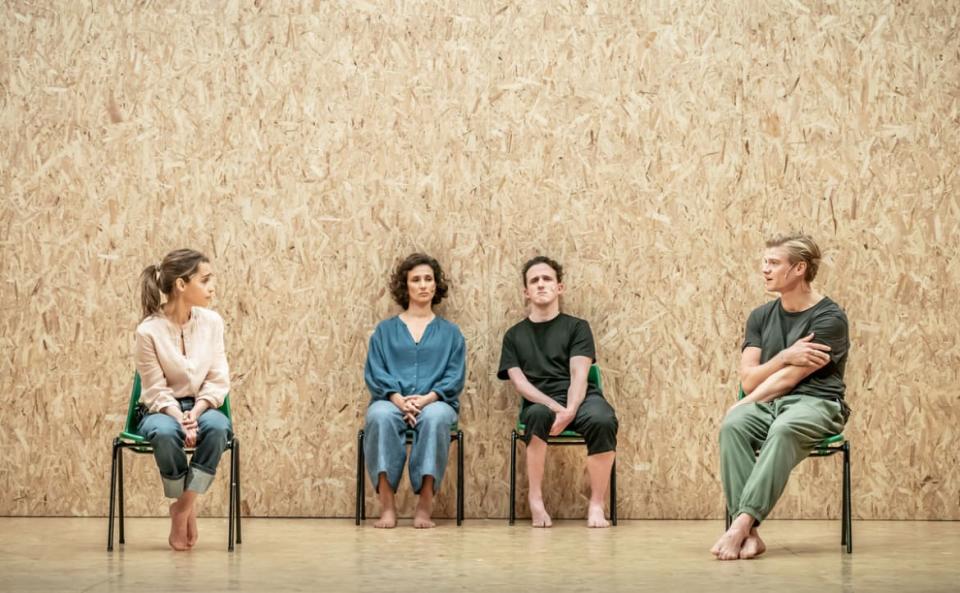London’s Hottest Theater Features a Group of Women on the Verge

Beloved properties and marquee stars are lighting up a sweltering summer on London’s West End, where ducking into a dark theater does not guarantee respite from the heat.
Sometimes, that’s a good thing. Director Rebecca Frecknall’s tightly coiled, high-style revival of Cabaret, staged in the round at the Kit Kat Club at the Playhouse Theatre (until Jan 28, 2023), is sumptuous, intimate, and, yes—awfully hot. Sweat under the collar inspired by Amy Adams’ unconvincing turn as Amanda in The Glass Menagerie at the Duke of York’s (until Aug. 28), however, is of a more discomfiting kind.
Review: A Radical and Shattering ‘Glass Menagerie,’ Starring Sally Field, Storms Broadway
But the stuffy atmosphere that a number of revivals, and at least one new play, are contending with on London stages is due not to intermittent air conditioning but stifling social constraints—those that have backed women into corners, force-fed them fantasies about fulfillment, happiness, and love, robbed them of agency, and expected them to persevere. Though the story has been endlessly rehearsed, its urgency has never faded. Just have a look at headlines on the opposite side of the pond.
A hardscrabble Sally Bowles has just relinquished her fur-coat of armor to the doctor who performed her abortion when she returns to the room she shares with a would-be American novelist (Omar Baroud).
As Sally, Amy Lennox cracks open Cabaret’s ensuing title song with a performance that feels as unpredictable, and almost dangerous, as it does devastating and defeated. Lennox, who assumed the role from Jessie Buckley and will perform until Oct. 1, makes delicate, lucid sense of Sally’s hope-hued softness and rough-cut edges in a way that A-listers Michelle Williams and Emma Stone couldn’t on Broadway.
Lennox and Fra Fee, who took over as the Emcee from Eddie Redmayne, lead a visionary staging from Frecknall, whose finesse with sensual surfaces deepens the sense of what lies beneath them. The production is a feat of visual design (with set and costumes by Tom Scutt and lighting by Isabella Byrd), its intricate collage of textures and muted colors churning up and overflowing from the small round stage.

“Cabaret.”
Lennox’s Sally is the revival’s pounding heart in violet lipstick, a dreamer with every reason to be cynical and a testament to the power of breakfast gin.
A haughty and more closely corralled ferocity simmers through director Jamie Lloyd’s deconstructed reimagining of The Seagull (until Sept. 10). Though it’s Emilia Clarke, as Nina, whose portrait hangs high on the Harold Pinter Theatre facade, it’s the grande dame Irina, played by an imperious and coolly withering Indira Varma, who keeps the aspiring actress firmly in her shadow, even as Irina’s novelist lover Trigorin (Tom Rhys Harries) wavers between the two.
If Nina is the seagull, all flighty innocence until she is destroyed by a man with nothing better to do, Varma’s Irina is a peacock, her power and preeminence clear even with her feathers calmly folded. Unfurling them would just be overkill.
Where Lloyd’s redux of Cyrano, presented last season at BAM and starring James McAvoy as a hunky pariah, pushed language to the forefront, here the focus is mood, countenance, and disposition.
Lloyd’s stripped-down approach to the text (a new version by Anya Reiss) is set on green plastic chairs across a stage like a cedar closet lit by the sun (set and costume design are by Soutra Gilmour and lighting by Jackie Shemesh). Languid but taut, talk unfurls about the purpose of theater (to go beyond what we already know), the tyranny of having aspirations, and the lure and fallacies of fame.

“The Seagull.”
It’s a meta bit of rib-elbowing that Clarke, whose celebrity fills the stalls, waxes moony-eyed as Nina over the stardom of her seaside companions. In the ingenue’s emotional climax, she recalls the mortifying feeling of being on stage and knowing that she’s terrible and that everyone else can see it, too. It’s an especially affecting moment from Clarke, who fortunately does not succumb to the same fate—nor soar so incredibly far above it that the scene doesn’t seem to echo with some measure of personal resonance.
Varma (whom audiences may also recognize from Game of Thrones) captures the fierce but composed cunning of a woman hanging onto what’s hers—a pliable lover, a house in her brother’s keep, an indelible reputation—without betraying how much effort it takes. It’s a masterful turn, all the more impressive for being delivered in half repose.
There’s no place for any characters to sit down in director Jeremy Herrin’s curiously flat and airless revival of The Glass Menagerie, outfitted with a dining room table but no chairs. Perhaps that’s because there’s no comfort in stasis for any of the Wingfields—not for Tom, who has already split (and is played here by Paul Hilton as narrator and Tom Glynn-Carney as his younger self, a separation that proves unaffecting); not for Laura (Lizzie Annis), who has few prospects and much insecurity about her disability; and certainly not for Adams’ Amanda, who flits and dotes but rarely seems to reflect even when she’s lost in memory.
Adams’ star power, which filled not quite three-quarters of the stalls on a recent Tuesday, seems to be the sole driving force behind the revival, which otherwise lacks a forceful or distinct interpretation. There’s a deficit of dimension and variation to Adams’ performance uncharacteristic of her work on screen. If producers are betting that audiences will return after a pandemic hiatus for big names and familiar stories, there do seem to be exceptions when the results are underwhelming.

“All of Us.”
The impetus to stand up and fight animates All Of Us, a moving and trenchant new play written by and starring Francesca Martinez now on at the National Theatre (to Sept. 24). Like Martinez, her character Jess has cerebral palsy; though she wryly describes herself as “wobbly” on her feet, Jess has carved out a sturdy life for herself with some support from government benefits. While she receives daily assistance from a caregiver, for activities beyond her dexterity like preparing meals and fastening her clothes, she drives herself to work as a therapist, administering patients with psychological care of her own.
Directed by Ian Rickson, All Of Us begins by demonstrating the networks of support and connection that bind its characters, and by an extension of imagination, everyone seated around the black-box Dorfman Theatre.
The challenges and triumphs of everyday lives unfold—a patient whose anxiety has been heightened by the pandemic, another whose alcoholism numbs feelings of neglect, and a friend in a wheelchair who’s a lion tamer on Tinder. If there is no such thing as normal or beautiful, as Jess insists, then what are the limits to what we can imagine is possible for ourselves and for others?
A more polemic second act directly addresses the social problem of benefit cuts in the U.K. to people with disabilities and their devastating consequences. Without some assistance of her own, Jess can no longer offer care to others, and the system of support that she upholds is broken. What makes one person worthy of attention and resources while another is neglected? The women in All Of Us—friends, caregivers, lovers—recognize such separations as artificial, misguided, and obstacles to people seeing each other for who we are.
If more stories on stage can inspire a similar understanding, isn’t that why we come together to share them in the dark?
Get the Daily Beast's biggest scoops and scandals delivered right to your inbox. Sign up now.
Stay informed and gain unlimited access to the Daily Beast's unmatched reporting. Subscribe now.

 Yahoo News
Yahoo News 
